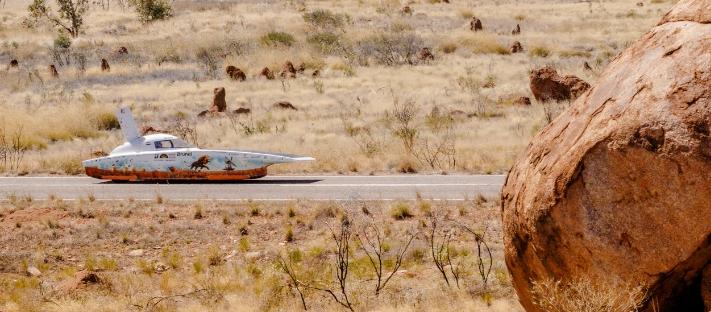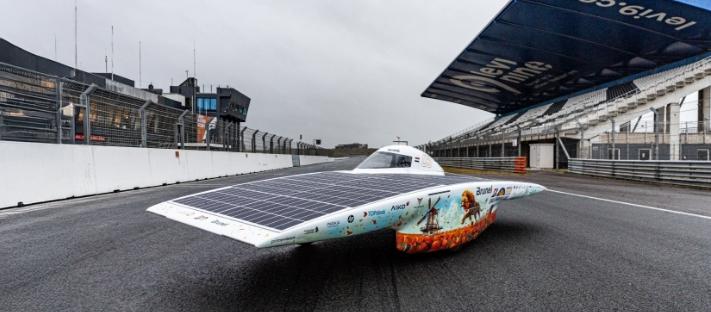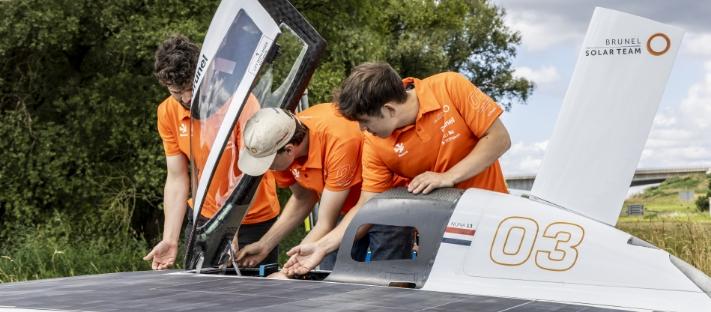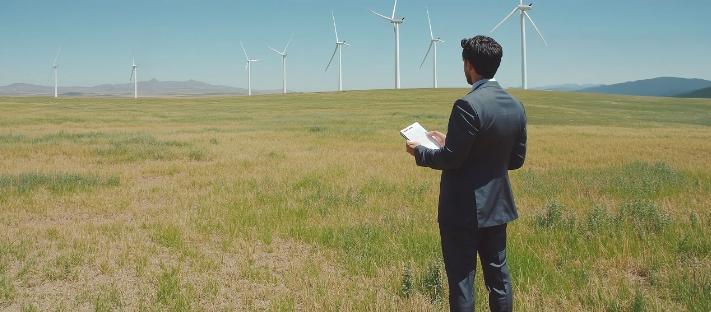Shaped under pressure
From constraints to clarity and the resilience that defines true engineering progress
Potential is only the beginning. A fiber shows its character when loaded; a team shows theirs when placed under strain. For the Brunel Solar Team, the World Solar Challenge was a 3,000-kilometer journey across Australia. It was also a year in which theory gave way to responsibility, and students began to see themselves differently.
At first, the project felt abstract. Models looked promising, ideas were plentiful, and the car existed mostly on a screen. By the finish line, those same students spoke about pressure, responsibility, trust, and leadership.
The shift was not only in Nuna 13 but also in the people who built her. They arrived as students with ambition. They left with resilience earned through real-world engineering experience.
Constraints bring clarity
Strength in aramid does not come from chance. It is defined by how precisely the polymer chains are aligned, each forced into order so they carry together in one direction. Randomness weakens the fiber; orientation gives it strength.
The students met the same reality in their first design meetings. Six square meters of solar array. A weight target with no slack. At first, these boundaries felt like limitations. Good ideas had to be set aside, and options narrowed. But the constraints acted like orientation, stripping away randomness and forcing clarity.
“When time grew short, we had to decide which projects to prioritize, which to find quicker solutions for, and which to let go completely,” recalls Thijmen God, Technical Manager. By the end, the limits no longer felt like restrictions but like the alignment that gave their design its structure. Once the car left the workshop, those tests came quickly. On the road, numbers on a screen gave way to forces that no simulation could soften.
Pressure → resilience
On paper, pressure appeared as loads, margins, and graphs. On the road, it came in less predictable forms: crosswinds rocking Nuna sideways, cloud cover cutting the solar input, seconds slipping away during a stop.
In those moments, routines hardened in testing became instinct. A pit stop compressed into seconds. A gust met with an immediate course correction. Strategy calls sharpened under the knowledge that hesitation meant lost ground.
Aramid fibers face the same test in extremes. Where other polymers soften as heat rises, aramids keep their modulus and hold shape. Stability is not claimed in design but proven when conditions reach their limits. Nuna’s engineers showed the same response: under desert heat, shifting winds, and the weight of seconds, they held structure instead of giving way. Holding form under pressure depended on more than preparation. It also demanded complete trust in how each role connected to the next.
“The Brunel Solar Team showed that resilience is not improvisation; it’s preparation revealing itself at speed. As we see with aramids, resilience is not in a single property but in the way those properties hold together, reliably, when the unexpected arrives.”
Hendrik De Zeeuw, Chief Commerical Officer
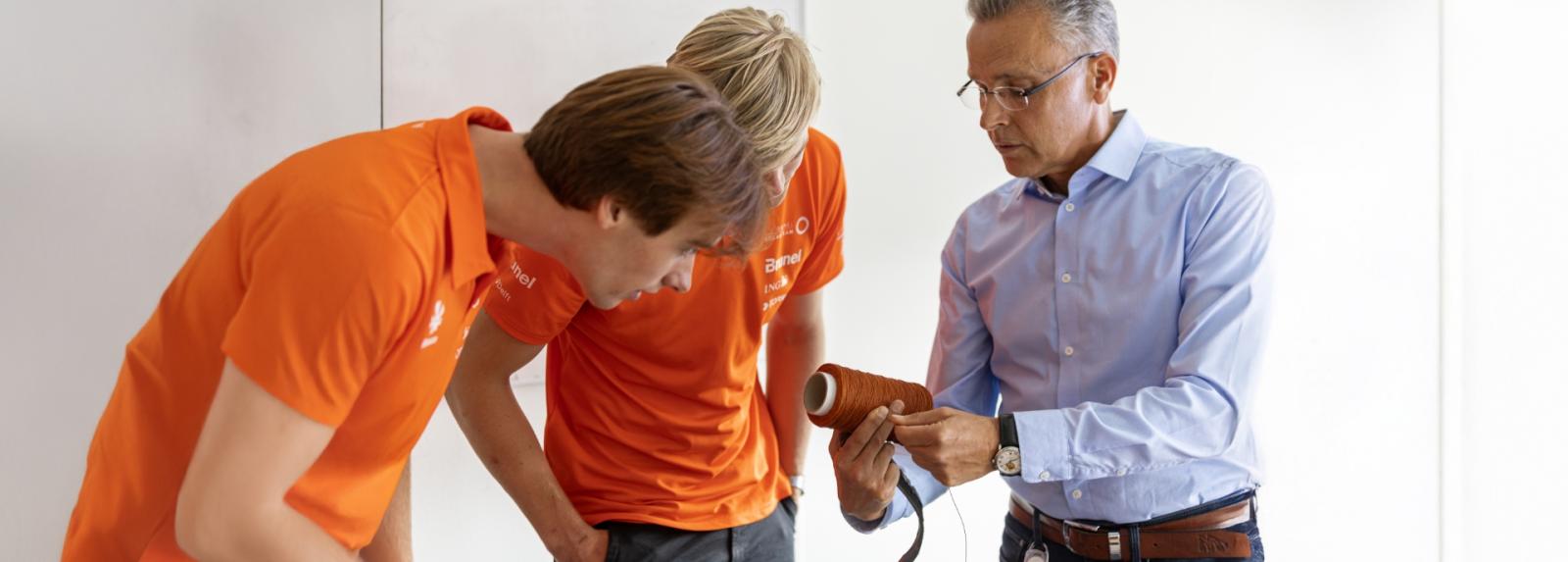
Trust → reinforcement
Trust did not arrive in a single moment, but in the way the group began to operate together. Early in the project, discussions stretched on, and ownership was divided. By the time Nuna reached the Outback, those divisions had given way to flow. Pit stops ran as if each motion was preloaded into the next. Wind shifts were met with collective adjustment rather than debate.
Aramid fibers behave the same way. A single filament can break, but in a bundle, the strain redistributes and the structure holds. The team showed the same quality: when one person faltered, the sequence carried on, the whole absorbing what the individual could not. That shift, from separate effort to shared resilience, became their true advantage. And like the strength of fibers proven over years of service, that advantage did not fade when the race ended… It carried forward as the quiet legacy of the Outback.
Legacy → looking forward
The value of an aramid fiber is not measured in the moment it leaves the production line, but in how it performs after years of use and countless cycles of stress. Its durability is proven in service, long after initial strength has been claimed.
The World Solar Challenge gave the students a similar kind of endurance. What they carried home was not just a race result but lessons that repeat: how to decide when no perfect option exists, how to lead when responsibility falls on you, and how to keep going under sustained strain.
“In the beginning, I introduced myself as a student. By the finish, I realized I had started speaking as an engineer: carrying responsibility, owning decisions, not just absorbing knowledge but leading.”
Merijn Kroon, Partnerships, Brunel Solar Team
“At some point, you have to decide: what’s best for the team? Sometimes that meant working harder. Sometimes it meant stepping back. Learning to make that call was just as important as building the car,” said Thijmen God, Technical Manager. That ability – to judge when to push and when to hold back – is the true legacy of the Outback: experience that does not fade with the challenge but endures like a fiber designed to resist fatigue. It will show itself again in every project, every decision, and every future challenge these engineers take on.
Related news
As partners in a variety of industries that use our aramids in their products, Teijin Aramid actively participates in numerous events and trade shows. Discover more about these, along with updates on our work, here.

